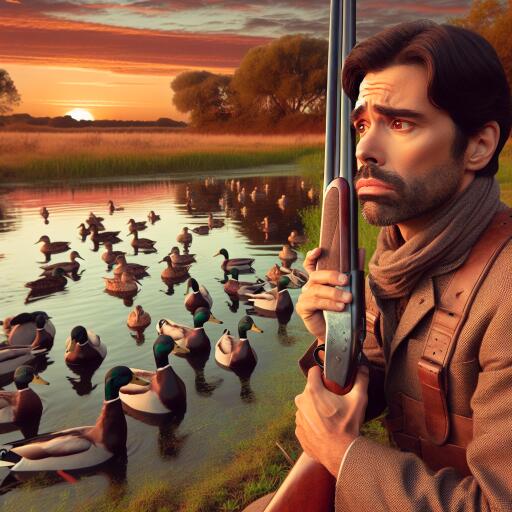Breeding Ducks on the Decline Could Spell Trouble for Hunting
In the heart of North America’s prime waterfowl breeding areas, conservation organizations like Delta Waterfowl are dedicated to the preservation and increase of duck populations. This commitment is fundamental to ensuring the continuation of waterfowl hunting traditions. However, recent findings indicate a concerning trend in the numbers of several duck species, pointing towards potential challenges for future hunting seasons.
Delta Waterfowl, a leading conservation group with its operations centered in Bismarck, North Dakota, intensely focuses on habitat conservation and management programs aimed at boosting duck breeding success. The organization collaborates closely with state and federal agencies, including the North Dakota Game and Fish Department (NDGFD), to monitor and evaluate waterfowl populations through comprehensive scientific research.
Recent data collected by these entities reveal a significant downturn in the populations of various duck species. “Species such as mallards have seen a decline of about 19%, while pintails and blue-winged teal are down by approximately 29% and 13%, respectively,” reports a wildlife official from NDGFD. When these figures are compared to the flourishing periods of duck breeding between 1994 and 2016, the current statistics show an even starker decline, with reductions ranging from 24% to 49% across species like gadwalls, wigeon, and northern shovelers.
The challenge in dissecting these trends lies in the complex interplay of environmental factors affecting waterfowl numbers. Despite the commonality of drought conditions across the prairie pothole region, which have persisted for several years, contributing to lower duck production, the recent upturn in rainfall just before the survey period has provided a silver lining. Improved wetland conditions could potentially support better breeding outcomes in the following seasons. “While we’re not in a state of emergency, the current numbers are a far cry from the record highs observed in the early 2000s,” an expert noted, referencing the remarkable 5.4 million breeding ducks recorded in 2002.
Luckily, rain and its timing can have a beneficial impact on duck populations, emphasizing the importance of precipitation for both renesting efforts and providing suitable habitat for duck broods. This underscores the critical role that environmental conditions play in waterfowl conservation.
The path towards a brighter future for waterfowl requires a concerted effort from various stakeholders, including governmental bodies, conservation groups, and importantly, engaged citizens. Efforts to maintain and enhance prairie wetlands are paramount, given their significance in supporting robust duck breeding. Innovations in conservation practices and policies, especially those aimed at protecting small wetlands, are integral to sustaining North America’s duck populations.
As these collaborative efforts continue, with a keen focus on adapting management strategies to address the observed declines, there remains hope for stabilizing and eventually increasing duck numbers. The collective dedication of conservationists, government agencies, and everyday citizens alike is vital for fostering healthy waterfowl habitats and ensuring the legacy of waterfowl hunting for generations to come.
The journey ahead may be challenging, but with continued commitment to science-based conservation measures and a collective effort from all involved parties, the future of waterfowl and hunting traditions looks promising. Adjustments in our approach to managing habitats and duck populations are necessary, and with the right strategies, we can look forward to thriving waterfowl communities across North America.
As the dialogue around waterfowl conservation continues, it is clear that every effort counts towards building a sustainable future for ducks and hunting alike. With the landscape ever-changing, the resolve and participation of the conservation community remain crucial in navigating the path ahead.









